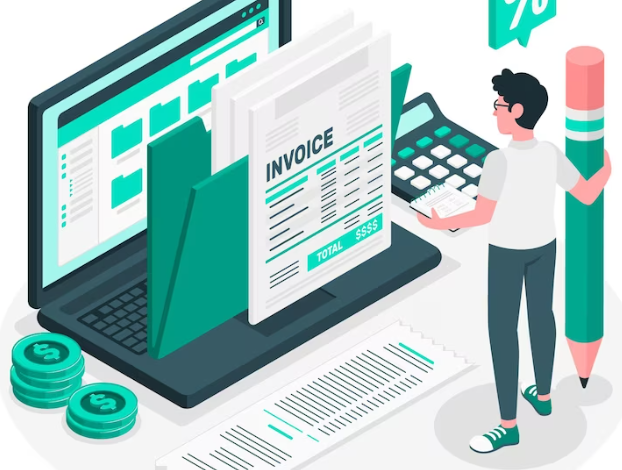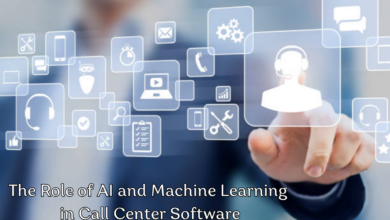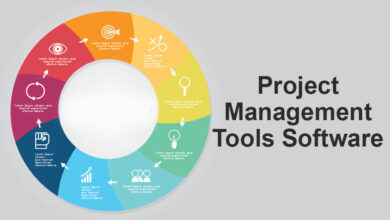Unlocking Efficiency: Building a Model that Automates Receipt and Invoice Reading

Introduction to the problem of manual receipt and invoice processing
Welcome to the world of manual receipt and invoice processing – a tedious, time-consuming task plagues businesses of all sizes. Picture this: stacks upon stacks of paper receipts and invoices piling up on your desk, demanding your attention. With each passing day, you find yourself drowning in paperwork, struggling to keep up with the constant influx of financial documents.
But fear not! In today’s digital age, there is an innovative solution waiting to liberate you from this administrative nightmare. Automation has become the holy grail for businesses looking to streamline their processes and boost productivity. By harnessing the power of cutting-edge software and technology, you can bid farewell to mind-numbing data entry tasks and say hello to a more efficient way of managing receipts and invoices.
In this blog post, we will delve into the exciting world of automating receipt and invoice reading. We’ll explore the benefits it offers, discuss various types of software available for automation purposes, guide you through the steps involved in building a customized model for your business needs, analyze cost-effectiveness, address potential challenges along the way, and even peek into future possibilities within this realm.
So fasten your seatbelts as we embark on a journey towards unlocking efficiency like never before! Get ready to revolutionize how you handle those pesky receipts and invoices – let automation pave the way toward newfound productivity!
Benefits of Automating Receipt and Invoice Processing
There are numerous benefits to automating the process of receipt and invoice processing. By harnessing the power of technology, businesses can significantly enhance their efficiency and streamline their operations.
Automation eliminates the need for manual data entry, which saves time and reduces errors. No more tedious hours spent typing in numbers or deciphering handwritten notes. With automated software like Receipt OCR, receipts and invoices can be scanned or uploaded digitally, with the relevant information automatically extracted for further processing.
Automation improves accuracy by minimizing human error. Mistakes in data entry can have costly consequences for businesses – incorrect figures could lead to erroneous financial records or payment discrepancies. By automating this process, businesses can ensure that data is captured accurately every time.
Furthermore, automation allows for faster processing times. Traditional manual methods involve physically handling each receipt or invoice before entering them into systems manually. This not only slows down the overall workflow but also increases the likelihood of delays or misplaced documents. Automation streamlines this entire process by digitizing it from start to finish.
Additionally, automated receipt and invoice processing provides better visibility into financial transactions. All relevant data, such as billing details, supplier information, and amounts owed/received, can be easily accessed through a centralized platform. This enables organizations to monitor cash flow effectively while providing valuable insights for decision-making processes.
Moreover, automation enhances compliance with regulatory requirements such as tax laws and audit trails, as all transactions are accurately recorded within digital systems that maintain integrity over time.
Types of software and technology used for automation
When it comes to automating the receipt and invoice reading process, there are several types of software and technology that businesses can utilize. One popular option is Optical Character Recognition (OCR) software, which uses advanced algorithms to extract text from scanned documents. This allows for easy data extraction and analysis.
Another powerful tool in automation is machine learning technology. By training a model with large amounts of data, it can learn to recognize patterns and accurately classify different types of receipts and invoices. This eliminates the need for manual sorting and categorization.
Robotic Process Automation (RPA) is another solution that many businesses are adopting. RPA involves using software robots or “bots” to perform repetitive tasks such as data entry or document processing. These bots can be programmed to handle various formats of receipts and invoices, saving time and reducing errors.
Cloud-based solutions are also gaining popularity in the automation field. With cloud technology, businesses can store their digitized documents securely online, making them easily accessible from anywhere at any time. This not only streamlines the storage process but also enables real-time collaboration among team members.
In addition to these technologies, integration with existing accounting systems is crucial for seamless automation. By connecting automated receipt and invoice reading software with your accounting software, you can ensure accurate record-keeping without manually transferring information between systems.
There are various options available when it comes to automating receipt and invoice processing. The right choice will depend on your business’s specific needs and goals. VisionX is the leading IT company that provides the best software for receipt and invoice processing.
Steps to building a customized automation model for your business
Building a customized automation model for your business can be an effective way to streamline and optimize the receipt and invoice processing process. By following a few key steps, you can create a system that fits the unique needs of your organization.
It is important to assess your current manual processes and identify pain points or areas where automation could provide the most benefit. This may involve analyzing data entry errors, time spent on manual tasks, or bottlenecks in the workflow.
Next, research and select software or technology that aligns with your requirements. There are various options available, ranging from standalone receipt scanning apps to more comprehensive enterprise resource planning (ERP) systems with built-in OCR capabilities. Consider factors such as cost, scalability, integration capabilities with existing systems, and user-friendliness.
Once you have chosen the right software solution for your business needs, it’s time to implement it into your workflow. This involves setting up the system according to your specific requirements – configuring data fields for extraction from receipts/invoices and defining rules for validation or exception handling.
After implementation comes testing and fine-tuning. Run pilot tests using sample receipts/invoices to ensure the accuracy and efficiency of data extraction. Make adjustments as needed until you achieve satisfactory results.
Train employees on how to use the automated system effectively. Provide clear instructions on how to scan/upload receipts/invoices into the system and educate them about any additional features like mobile app access or reporting functionalities.
By following these steps diligently while keeping in mind your organization’s unique requirements throughout each stage of building an automation model for receipt and invoice processing – you will be well on your way to unlocking efficiency within this crucial aspect of financial management.
Cost-benefit analysis
Cost-benefit analysis is a crucial step in the process of building an automation model for receipt and invoice reading. By evaluating the costs associated with implementing such a system against the benefits it can bring to your business, you can make an informed decision about whether or not to proceed.
Let’s consider the costs involved. There may be expenses related to purchasing software or technology solutions, as well as potential training costs for employees who will be using the automated system. Additionally, there could be ongoing maintenance and support fees that need to be factored in.
On the other hand, when it comes to benefits, automating receipt and invoice processing offers numerous advantages. Time savings are one of the most significant benefits – by eliminating manual data entry and paperwork handling tasks, employees can focus on more value-added activities. This increased efficiency can lead to higher productivity levels within your organization.
Another benefit is improved accuracy. Manual data entry has its pitfalls – human errors are inevitable at times. However, automation reduces these risks significantly by leveraging advanced technologies like optical character recognition (OCR) algorithms.
Furthermore, automating this process enables real-time tracking of invoices and receipts throughout their lifecycle. With instant access to digital records, businesses gain better visibility into financial transactions, which facilitates faster decision-making processes.
Considering these potential cost savings alongside enhanced operational efficiency paints a compelling picture for investing in an automated receipt and invoice reading model.
Potential Challenges and How to Overcome Them
Implementing an automated system for receipt and invoice reading comes with its fair share of challenges. One common obstacle is the need for accurate data extraction from various document formats. Different vendors may use different layouts, making it difficult for the automation model to consistently extract the necessary information.
To overcome this challenge, businesses can invest in advanced OCR (optical character recognition) technology that is capable of recognizing and extracting data accurately from diverse document types. This ensures that even if a vendor changes their invoice layout, the system will still be able to extract the required information correctly.
Another challenge is ensuring seamless integration with existing software systems. Organizations often have multiple software tools in place for accounting, inventory management, or customer relationship management. The automation model should be able to integrate smoothly with these systems to streamline workflows without disrupting existing processes.
To tackle this challenge, it is important to carefully select a solution provider that offers compatibility with your current software infrastructure. Collaborating closely with IT teams during implementation can help address any integration issues upfront and ensure a smooth transition.
Data security and privacy are also key concerns when automating receipt and invoice processing. Confidential financial information must be protected against unauthorized access or breaches.
To mitigate these risks, businesses should opt for solutions that offer robust encryption measures and adhere to strict security protocols, such as secure cloud storage or on-premises hosting options. Regular audits should also be conducted to identify vulnerabilities and implement necessary updates or patches promptly.
Change management within an organization can pose a significant challenge during the adoption of automated receipt and invoice reading systems. Resistance from employees who are accustomed to manual processes may affect acceptance rates and hinder successful implementation.
A proactive approach towards change management is crucial in overcoming this challenge. It involves effective communication about the benefits of automation, highlighting how it will simplify tasks for employees rather than replacing them altogether. Providing thorough training sessions will empower staff members by showing them how they can leverage the automated system to enhance their productivity and focus on more valuable tasks.
Future Possibilities in this Field
As technology continues to advance at a rapid pace, the possibilities for automation in receipt and invoice processing are expanding. With artificial intelligence (AI) and machine learning algorithms becoming more sophisticated, businesses can look forward to even greater efficiency gains in the future.
One exciting possibility is the integration of voice recognition technology into automated systems. Imagine being able to simply speak your receipts or invoices into a device, which then automatically processes and records the information accurately. This could significantly reduce manual data entry time and minimize errors caused by human input.
Additionally, as AI models become more refined, they will be able to handle increasingly complex tasks related to receipt and invoice reading. Currently, most automation software focuses on extracting basic details like vendor name, date, and total amount. However, in the future, these models may be capable of analyzing line-item details such as product descriptions and quantities.
Conclusion
Automating the process of receipt and invoice processing can be a game-changer for businesses, unlocking efficiency and saving valuable time and resources. By leveraging software and technologies designed to read, extract, and analyze data from these documents, organizations can streamline their operations and improve accuracy.
The benefits of automation are clear – reduced manual errors, increased productivity, faster processing times, improved data visibility, and enhanced decision-making capabilities. With the ability to customize automation models to fit specific business needs, companies can optimize their workflows for maximum efficiency.
Building a customized automation model requires careful planning and consideration. It involves selecting the right software or technology that aligns with your organization’s requirements. Implementing the necessary steps, such as data extraction training, integration with existing systems, and ongoing maintenance, is essential for successful implementation.
While there may be initial costs associated with implementing an automated solution, it is important to conduct a thorough cost-benefit analysis. Consider factors such as labor savings over time versus upfront investment costs to determine if the benefits outweigh the expenses in the long run.
Although challenges may arise during implementation – such as technical issues or resistance from employees – they can be overcome through proper communication channels, training programs, and change management strategies. Engaging stakeholders throughout the process will help ensure the smooth adoption of automation within your organization.



